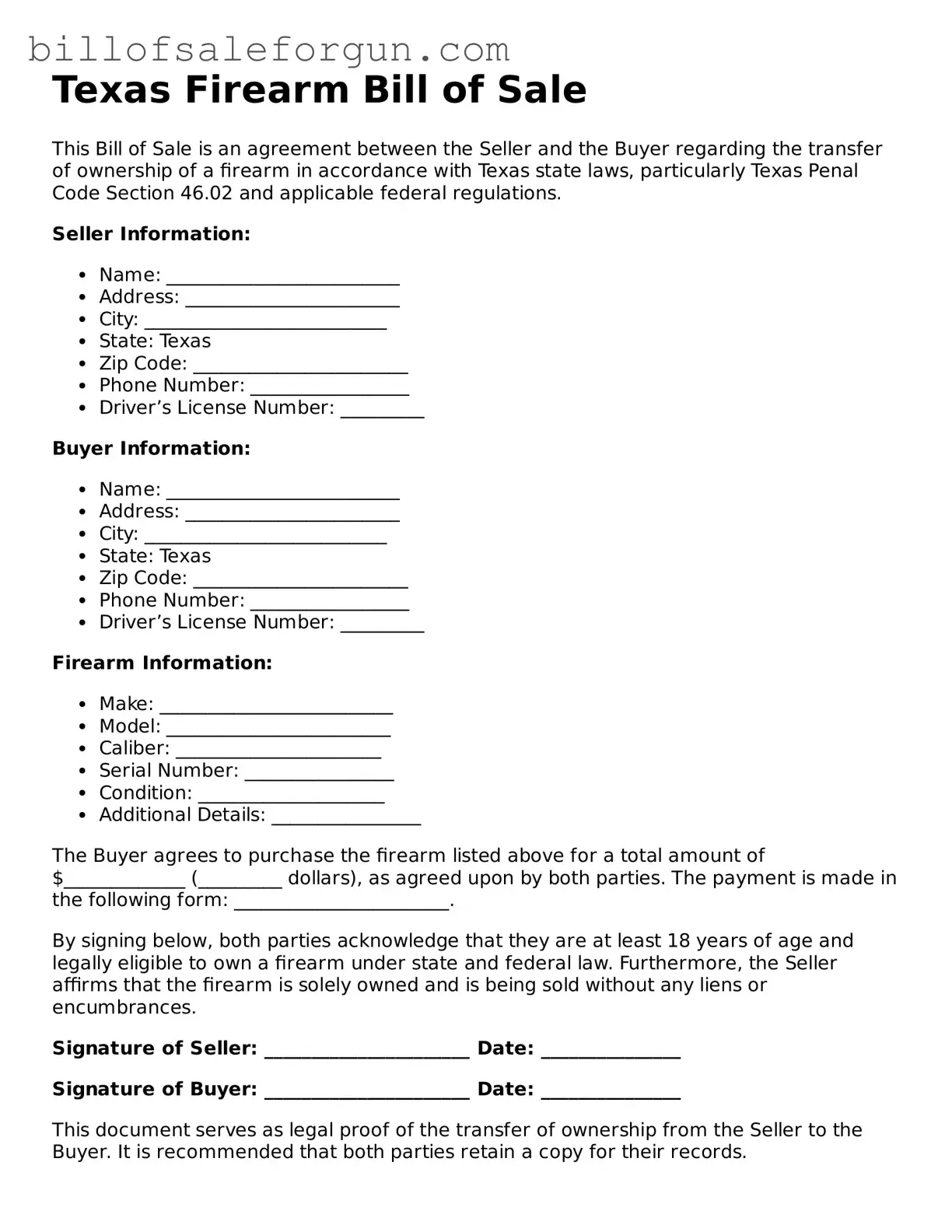Similar forms
The Texas Firearm Bill of Sale form shares similarities with the Vehicle Bill of Sale. Both documents serve as proof of transfer of ownership from one party to another. They typically include details such as the names and addresses of the buyer and seller, a description of the item being sold, and the sale price. Just like with firearms, it’s crucial for vehicle transactions to have a clear record to avoid disputes later on.
Another related document is the Boat Bill of Sale. This form, like the Firearm Bill of Sale, is used to document the sale of a recreational vehicle. Both documents require information about the seller and buyer, as well as a detailed description of the boat, including its hull identification number. This helps ensure that ownership is clearly established, protecting both parties in the transaction.
The Personal Property Bill of Sale is also similar. It can be used for various types of personal property, including electronics or furniture. This document outlines the terms of the sale, including the item’s condition and any warranties. Just as with firearms, having a written record can help resolve any future issues regarding ownership or condition.
In the realm of real estate, the Real Estate Purchase Agreement is akin to the Firearm Bill of Sale. While it deals with property rather than firearms, both documents formalize a transaction and outline the terms agreed upon by the buyer and seller. They include essential details such as the purchase price and any contingencies, ensuring that both parties understand their rights and obligations.
The Lease Agreement shares similarities as well. Though it pertains to rental rather than sale, it outlines the terms under which one party can use another's property. Both documents require clear identification of the parties involved and the specifics of the item or property in question. This helps prevent misunderstandings and ensures that everyone is on the same page.
The Equipment Bill of Sale is another relevant document. Often used in business transactions, it serves to transfer ownership of tools or machinery. Like the Firearm Bill of Sale, it includes details about the item, such as make, model, and condition. This ensures that both the buyer and seller have a clear understanding of what is being exchanged.
The Art Bill of Sale is similar in that it documents the sale of artwork. This form includes the names of the buyer and seller, a description of the artwork, and the sale price. Just as with firearms, having this documentation helps establish provenance and ownership, which can be crucial in art transactions.
Finally, the Livestock Bill of Sale is another document that resembles the Firearm Bill of Sale. It is used to transfer ownership of animals, detailing the seller and buyer’s information, as well as the specifics of the livestock being sold. Both documents aim to provide clarity and protect the interests of both parties involved in the transaction.
